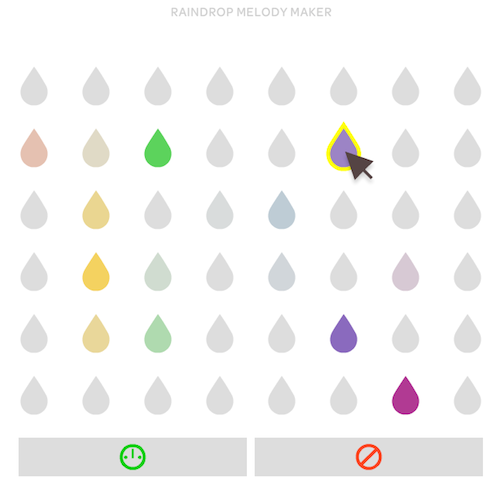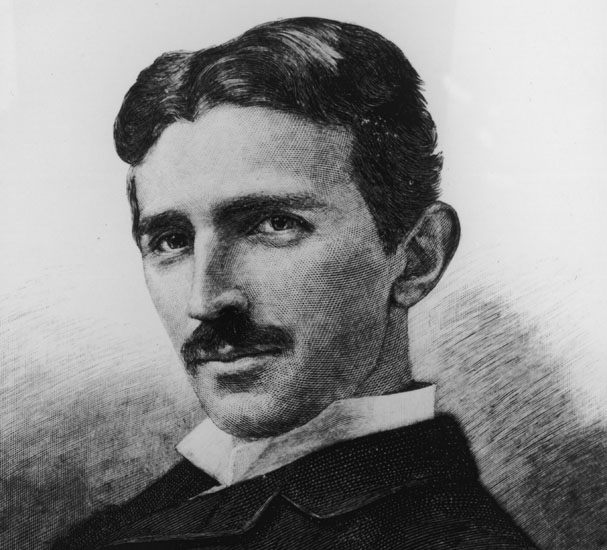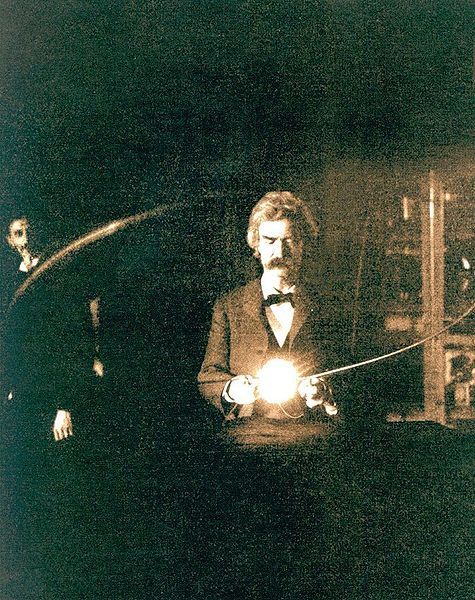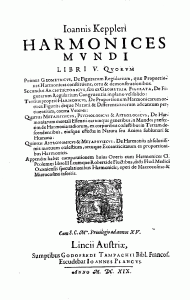
No Words, just music. Give it a try. This made my day: Raindrop Melody Maker.
Thanks to Lullatone and Secondary School for creating this beautiful, interactive and hypnotizing musical instrument.

No Words, just music. Give it a try. This made my day: Raindrop Melody Maker.
Thanks to Lullatone and Secondary School for creating this beautiful, interactive and hypnotizing musical instrument.

A Tesla coil is a resonant transformer circuit invented by Nikola Tesla at the end of the 19th century. It is used to produce high voltage, relatively high current, high frequency AC electricity. Some people make music out of it.
“What you hear is audio modulated thunder”, Joe DiPrima of Arcattack, a band from Austin, Texas, explains. During their shows Arcattack’s MC and stunt man Patric Brown walks and dances through half a million Volt sparks wearing a Faraday suit.
One of Tesla’s early stuntmen was Mark Twain. The writer and the engineer were close friends and spent much time together in Tesla’s laboratory. Obviously Mark Twain survived the experiments and wrote some great novels later on. High voltage AC electricity is less dangerous for human beings than DC electricity. One explanation is that under AC electricity the ions in the human body are rather oscillating within the cells than moving between them. It might hurt anyway; and remember: a real thunder is DC! So please don’t try this at home, unless you are a stuntman wearing a Faraday suit or a great writer looking for inspiration.

Today the main use of Tesla coils is entertainment and educational displays. Neverless the underlying ideas on wireless communication seem visionary in the era of the internet. In 1915 Tesla declared that “wireless wonders” may solve some of the world’s greatest problems. With wireless communication “we might decrease the cost of the dissemination of useful information that every citizen of this country, resident no matter how remotely from the populated centres, could be kept continually in touch with the outer world occurences, weather prospects, and all that helpfull information which the Government already gathers, or might gather if it had at hand the means by which to make it public”, the New York Times reported on August 1, 1915. Let’s solve the problems, we have got the tools!


Everything that vibrates makes music. The music that is perceived by human beings is human music. For being able to perceive the music of atoms, stars, and animals, it has to be transformed. (Karlheinz Stockhausen 1975)
Sonification is the use of sounds to perceptualize data and information. It is an interesting complement or even an alternative to visualization techniques. Infographics have already become widespread and are considered as cool or even sexy.
Just imagine the huge potential of infosounds in the future.
One impressing example of sonification is the Large Hadron Collider (LHC) at CERN in Switzerland. LHC was in the news recently when it broke its own energy world record on March 30, 2010. The high energy collision created an enormous quantity of data which inot only a big challenge in the field of computing, but also may be one of the reasons why LHC made it’s way into the world of music and sounds.
Here is a visualization of what happened inside the LHC when two opposing particle beams collided with an energy of 7 000 000 000 000 eV:
httpv://www.youtube.com/watch?v=EP0ouOgMuNY
Now a group of particle physicists, composers, software developers and artists in the UK started a project called LHCsound, turning real and simulated data from the ATLAS detector at the Large Hadron Collider into sounds.
The team members Lily Asquith, a particle physicist, Richard Dobson, a composer and music software developer, Archer Endrich, a composer, Toya Walker, an illustrator and painter, Ed Chocolate, a London-based producer and DJ and Sir Eddie Real, a percussionist, want to attract people to the results of the LHC experiments in a way that is novel, exciting and accessible.
Their “simplest” example of sonification is HiggsJetSimple. This sonification transforms properties of the particle jet to properties of sound: energy becomes volume, distance defines timing and the deflection of the beam is the pitch. In this example the sounds reduce in density very much towards the end, with isolated events separated by silences of several seconds:
httpv://www.youtube.com/watch?v=IrXqptn6qvo
By the way, Frank Zappa sonified the search for Higgs’ boson many years ago. You can find it on his album Trance-Fusion.
httpv://www.youtube.com/watch?v=2lHixowXnlU
In principle any data can be sonified. NASA sonified the sun and the planets. Seismic data of earthquakes and volcanos has been sonified to great use. You can even sonify a painting, photograph or moving image which has enabled blind people to see with sound.
Sonification has a great potential and I am eager to see if it can make its way into popular culture like data visualization did with infographics.
(Thank you Toya Walker, CERN, Frank Zappa and LHCsound)
An overhead projector can be found in probably every classroom and caused a lot of students falling asleep during eternal presentations. Blair Neal from New York converted the most unglamouros educational technology into an interactive music-making machine.
Watch his installation that uses an old projector, a camera, some markers and a laptop and turns it all into a playful art piece. It is essentially an inverse color organ that you can play like a player piano. You can draw crazy things for fun or make more complex songs if they look more MIDI-sequencer like. Developed in Max/MSP and Jitter.
(thank you MAKE and Blair Neal)

 What is the sound of the universe? In 1619, Johannes Kepler published his book Harmonices Mundi (Latin for Harmony of the world) a description of the music of the spheres. He attempted to explain the proportions of the natural world in terms of music. Those “harmonies” had been studied before by Pythagoras, Ptolemy and many others. Kepler gave each planet its own tone. Although from a scientific point of view Kepler is considered the discoverer of the laws of planetary motion, his ideas for the music of the spheres were never really taken seriously.
What is the sound of the universe? In 1619, Johannes Kepler published his book Harmonices Mundi (Latin for Harmony of the world) a description of the music of the spheres. He attempted to explain the proportions of the natural world in terms of music. Those “harmonies” had been studied before by Pythagoras, Ptolemy and many others. Kepler gave each planet its own tone. Although from a scientific point of view Kepler is considered the discoverer of the laws of planetary motion, his ideas for the music of the spheres were never really taken seriously.
Today, the designers of White vinyl put the idea on a virtual turntable using the ordered the orbital periods to make music. Listen to the result at the website of White Vinyl Design. It’s contemplative, interactive – in a word, a very impressing update of an old idea!
